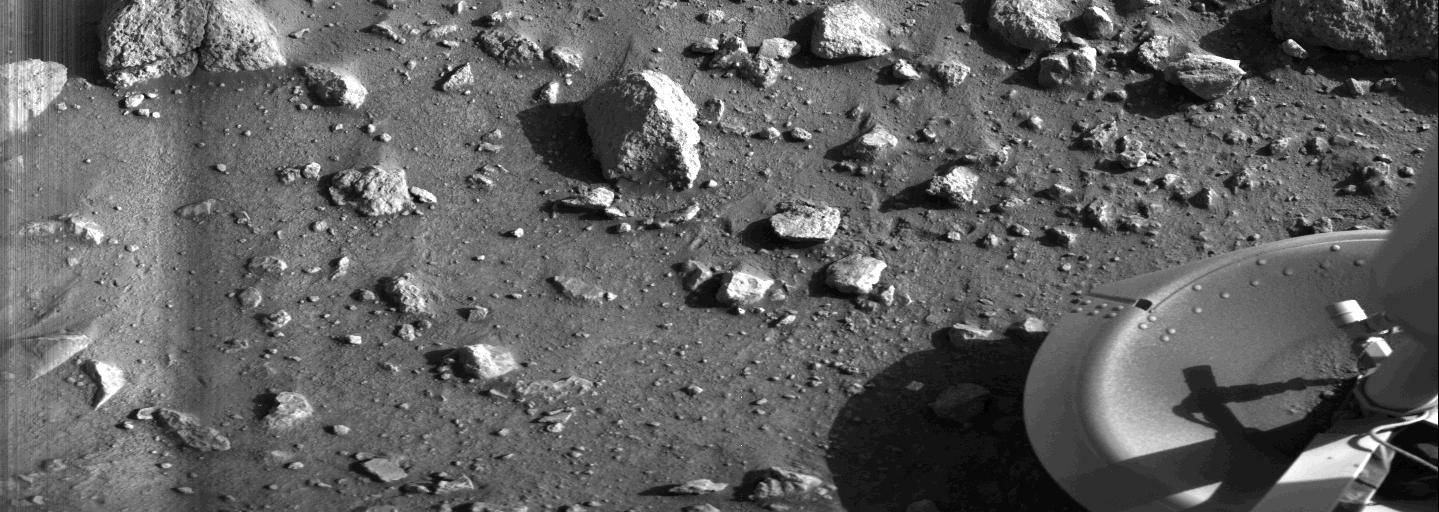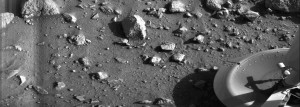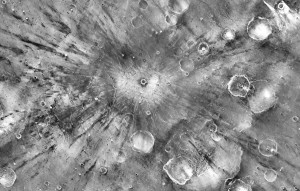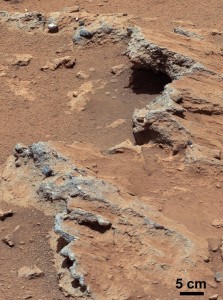This #MarsMonday, check out images from NASA’s first Mars lander to the most recent rover!
This was the first picture taken from the surface of Mars. NASA’s Viking 1 lander took the photo in 1976 on its mission to get high-resolution images of the surface and search for evidence of life. The mission also sought to study the structure and composition of the atmosphere and surface.
This image of a small impact crater was taken by NASA’s 2001 Mars Odyssey mission. The crater is 4.3 miles wide and is named Gratteri. This image was taken at night and shows how warm Mars’ various surface areas are. Brighter tones mean warmer temperatures, which also indicate rockier surface materials. Darker tones indicate cooler and dustier terrain.
This image was from NASA’s most recent Mars rover, Curiosity, which landed in 2012. The image shows one of a few sites where the rover found evidence for an ancient, flowing stream on Mars. The feature that looks like a broken sidewalk is actually exposed bedrock. It is made of smaller fragments that are cemented together. This rock outcrop is named “Hottah” and was one of the sites where the rover found evidence for ancient, water-transported sediment. Rounded pebbles are contained in this structure that indicate abrasion of rock fragments over an extended period of time.
To learn more about Viking 1, click here.
To learn more about 2001 Mars Odyssey, click here.
To learn more about Curiousity, click here.




